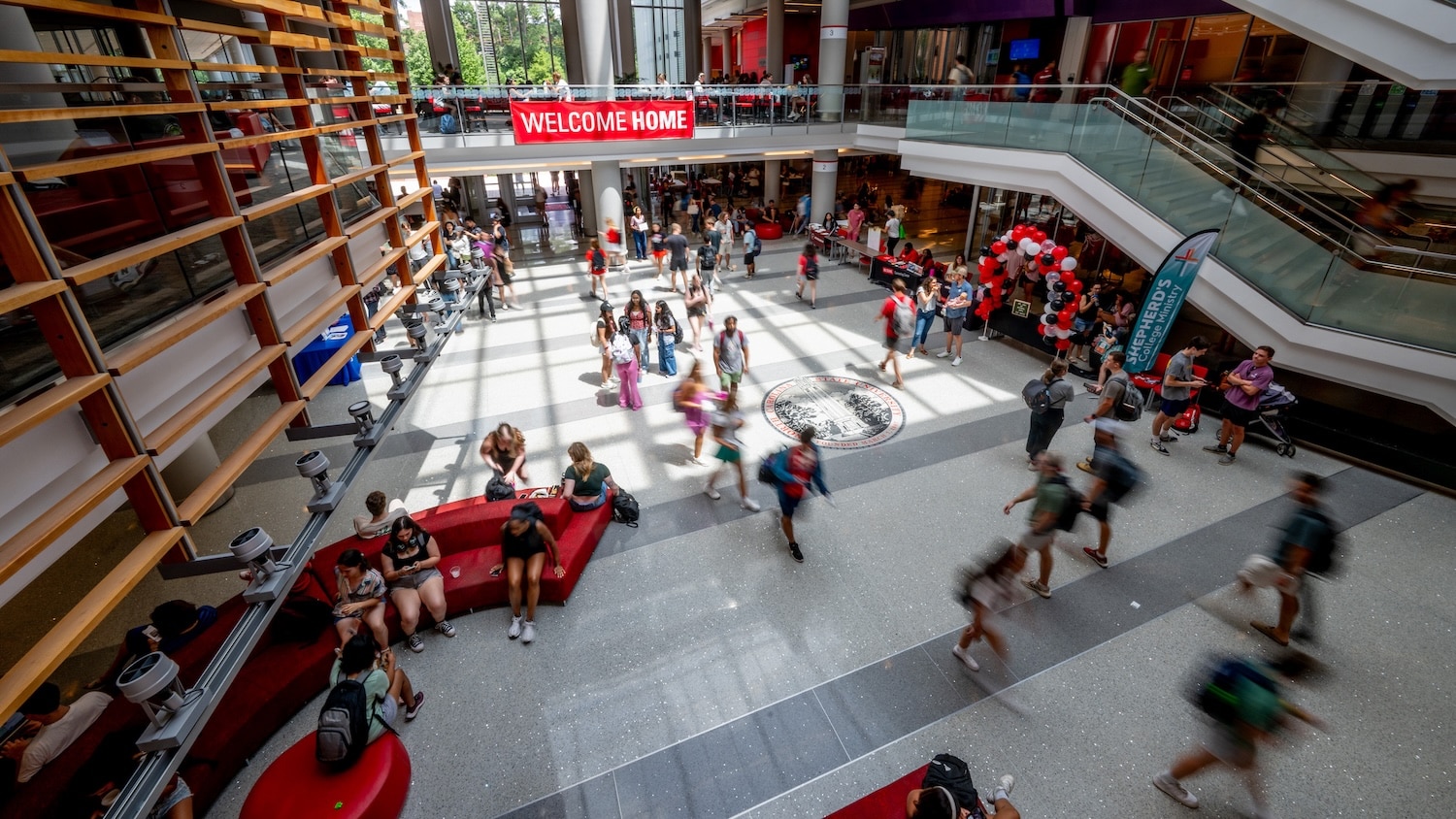Skeleton Crew
The renovated Park Shops building has everything students need to dig into the past: spacious anthropology labs, shiny new workspaces and plenty of skeletons, in the closet and elsewhere.
“You can’t teach anatomy, osteology or physiology without access to human remains,” said Dr. Ann Ross, a forensics researcher and associate professor in the department of sociology and anthropology. “It’s not something you can learn purely from books.”
The new labs, which opened in summer 2009, are the result of six years of work by university architects, planners, and designers consulting with Ross and two other associate professors in the department, archaeologist Dr. Scott Fitzpatrick and physical anthropologist Dr. Troy Case.
Before the new labs opened, instructors teaching forensics, archaeology or osteology (the study of human bones) had to limit class sizes.
“We now have the space that allows our students to get real hands-on experience with skeletal and archaeological remains,” Fitzpatrick said. “Students are given the opportunity to do real work in introductory courses, rather than having to wait until they take advanced classes.”
The osteology lab is home to an array of bones and casts of skulls, designed to help students understand the human skeleton. The archaeology lab contains a wide variety of artifacts, bones and biological remains that are all we have left to help us understand past human societies. And the forensic analysis lab gives students the opportunity to learn how to perform a “biological profile,” analyzing human remains to determine an individual’s age at death, sex and ancestral origin.
Not every student plans to emulate Indiana Jones or CSI: Miami, but the environment created by the new anthropology labs will give NC State students the skills they need to pursue careers in forensics, archaeology and related fields.
Faculty members say the new work and storage space will allow them to perform significant forensic, archaeological and osteological research on campus for the first time.
Much of that research is critical for solving criminal cases and identifying remains. NC State scientists have helped to solve a number of cases. Ross also helped develop a software program called 3D-ID that can help identify unknown cranial (skull) remains. Other research in the unit runs the gamut from prehistoric archaeological digs in the Caribbean and Pacific to genetic trait research that uses bones to look for ancestral relationships.
Best of all, the new labs enable faculty to bring students into the research process.
“We’re now able to present students with chances to do additional volunteer work, develop independent study courses and take part in faculty research,” Fitzpatrick said.
Faculty using the new labs expect to do more research and publish more research – both individually and with students as co-authors.
“We also expect the facilities to help us attract new grants, since we now have the infrastructure required to solicit funding for archaeological, osteological and forensic research and education,” Ross said.
The centerpiece of the new labs is the anthropology teaching lab, which serves as a classroom for both hands-on introductory classes and advanced courses.
“Until we had this lab, I could not teach advanced forensics courses on campus,” Ross said. “I had to teach the course off-campus, which posed a problem for some of my students.”
With the new labs, students can find the bones and the opportunities they’re looking for, right on campus.
- Categories:


